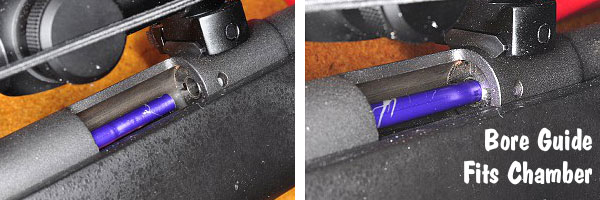Great Resource for Firearms History and Technical Information
Forum Member Roy B. has found a website with scores of well-researched articles about guns and shooting. The Firearms History Blog features a wide variety of posts on myriad subjects, from early black powder firearms to modern match rifles. You’ll find tons of information on gun design, barrel-making, action types, and firearms testing equipment. To access hundreds of articles, click on the Firearm History Blog Archive Menu on the left side. Click the navigation arrows to access monthly collections one by one. Some of the best articles are from 2010, so be sure to check those archives too! Here are some of our favorites:
Testing Firearms: Measuring Chamber Pressure
(Comment: Crusher Gauges were used through until the 1960s, when cheap Piezo-electric tranducers became available.)

Barrel Making: Making a Modern Steel Barrel (Two Parts)
(Comment: Barrel drilling process explained — interesting process.)
Metal Treatments: Ferritic Nitrocarburizing/Melonite/Tenifer
(Comment: Meloniting creates a super-hard surface layer; this has been used to extend barrel life.)
Barrel Making: Forming Rifling with Electric Discharge Machining (EDM)
(Comment: This advanced EDM method can also be used to cut chambers.)
History of Gun Cleaning Methods/Solvents
(Comment: Old-timers used some pretty weird concoctions such as “Rangoon Oil”.)
History and Engineering of Sound Suppressors (Two Parts)
(Comment: Interesting cut-away illustrations of suppressor baffles.)
Utility Firearms: Powder-Activated Tools
(Comment: There are construction tools that use gunpowder to drive fasteners into steel and concrete.)
Testing Firearms: History of Proof Testing (Two Parts)
(Comment: Fascinating article, worth a read.)

More Interesting Articles on RVB Precision Website
These and other articles on the Firearms History Blog will give you many interesting hours of reading — Enjoy! And while you’re cruising the web, definitely check out Roy’s own RVB Precision website. It features many interesting DIY gun and reloading projects, such as Fabricating a 17 HMR Bore Guide, Building a Swivel-Top Varminting Bench, and Fabricating a Unertl-type Scope Mount.



















 17-Cal Bore Guides — The Challenge
17-Cal Bore Guides — The Challenge

 Using the RVB 17 HMR Guide – Once the bore guide is in place, slide the supplied aluminum bushing over the tube, and gently push the bushing into the rear of the action. This centers the guide rod in the action to keep the guide rod tube aligned. Once the guide rod and bushing are in place, you can use a 17-caliber cleaning rod* with patches and/or brushes to clean the barrel. Use the rod normally, but make sure your patches are quite small and don’t apply too much pressure as these small-diameter rods can kink if you try to force over-size patches down the bore.
Using the RVB 17 HMR Guide – Once the bore guide is in place, slide the supplied aluminum bushing over the tube, and gently push the bushing into the rear of the action. This centers the guide rod in the action to keep the guide rod tube aligned. Once the guide rod and bushing are in place, you can use a 17-caliber cleaning rod* with patches and/or brushes to clean the barrel. Use the rod normally, but make sure your patches are quite small and don’t apply too much pressure as these small-diameter rods can kink if you try to force over-size patches down the bore.





